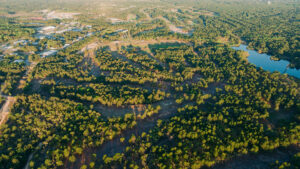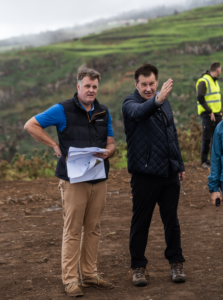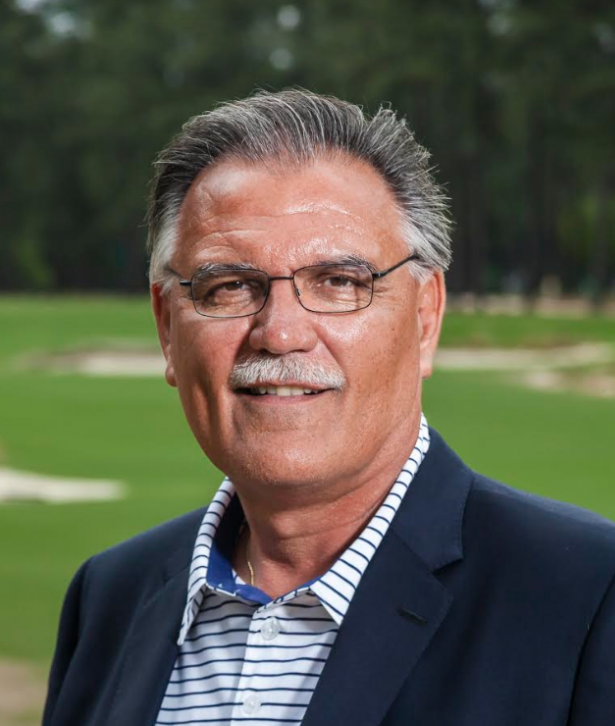

We visited Pinehurst resort the third week of May this year and a few weeks later we caught up with the Vice President of Grounds Operations at the resort – Bob Farren. The West Virginia native is an icon in the industry, and deservedly so, he’s spent four decades at Pinehurst tending to and managing one of the prized golf landscapes in the world – there likely is no better authority on the North Carolina sandhills and Donald Ross’ No.2 course. Bob Farren is a true old-school gentleman, polite, soft-spoken, and extremely thoughtful. We discussed everything from his humble beginnings as the son of a greenskeeper and school teacher, to what we can expect with Pinehurst No.2 for the 2024 U.S Open. We hope you enjoy our discussion with Bob Farren as much as we did . . .


LinksNation: Who were your mentors early on that influenced your path into Agronomy?
Bob Farren: First, it’s a pleasure to be with you today Jason, thanks for having me.
I would primarily say, my Dad. I grew up the son of a greenskeeper, it’s really all I ever aspired to do (taking care of golf courses). I used the bridge between my father’s career and mine. Back then it was more the art of greenskeeping, and my generation was more college-educated studying Agronomy and how the turf industry itself dealt with product development and environmental concerns – lots of resources invested in research. It’s more science-driven now, I’ve always tried to blend the two, the art with the science. I think it’s important for superintendents and agronomists to have the right mix of that. My Dad and his friends in the industry were my mentors, I grew up admiring Bob Mitchell at the Greenbrier Resort.
LN: So you were indoctrinated into turf life very early on . . .
BF: I never knew anything different, we lived a half-mile from the golf course and half-mile in the other direction from the school where my mother was a teacher. So, I was always on my bicycle heading to the course or to the school to play basketball.
LN: How many do you have on your staff here at the resort?
BF: We have between 175-200 total employees. Our supervisory/management team has ten. We’ve been very fortunate to manage things well with everything that happened these past 18 months. We feel blessed to have accomplished what we were able to and provide some quality golf for people who came to appreciate the fact that they were able to come out and walk and play – helping golf in general. We were also fortunate to have several part-timers with us through it all, the military presence here is outstanding. Those that wanted to work while not deployed for six months or so, as well as teachers that have the summers off – they have a great work ethic and leadership skills. Gives us a great mix of people.
LN: Do you have an intern program?
BF: We do, it’s become a very competitive environment for interns these days. Right now we have six. We could have as many as 12, but it’s been a challenge with getting interns from the turf programs the last 5 years or so. I’m personally involved in working to try and reinvigorate the program at our local community college here – it’s such a great opportunity with all of the courses we have here.
LN: Do you think some of the issues come from this young (tech-savvy) generation being uninterested in a career outdoors?
B.F: I think I agree with that to a certain extent, but I think so many were enamored with getting into the industry 20 years ago and it was lagging behind the boom of golf courses being built in the 90’s – so it seems like our profession is about six to eight years behind. There’s a whole cycle of people my age that will be retiring out of these positions in the next 5 or 10 years, providing plenty of good opportunities.
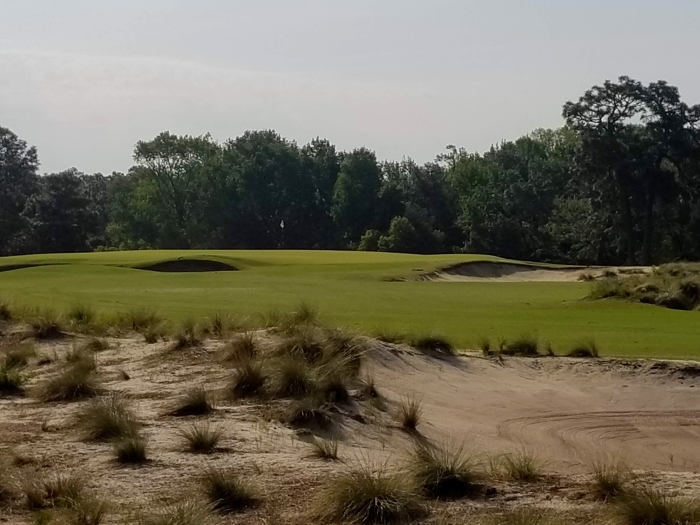

LN: When did your career start at Pinehurst?
BF: I first came in 1982, then Clubcorp bought the resort in 1984 (I left for 9 months for an opportunity back home in West Virginia). I was fortunate enough to be asked to come back as the Superintendent of No.2 and I’ve been here ever since.
LN: What still motivates you today?
BF: I just love what we do, and the executive leadership team we have here is fantastic. We are highly respected for what we do – being able to contribute to the success of Pinehurst.
LN: Since Bill and Ben renovated No.2 just over a decade ago, and now with the work Gil has done on No.4 – I would think that if Mr. Tufts (the founder of Pinehurst) and Donald Ross were here today – they would be very proud of what the resort team has accomplished with the recent restorations, renovations and additions. Your thoughts. . .
BF: Ten years ago when we did No.2 that was truly amazing, but I think the things that have come from that have come as a result of the restoration of No.2. We literally turned the clock back 40 years. I still look back in amazement at what a bold thing that was. We had history in our favor and we had documentation of what it was. The success of that project and future change has led us to where we are today – literally. The Cradle, the course No.3 restoration and then what Gil did with No.4.
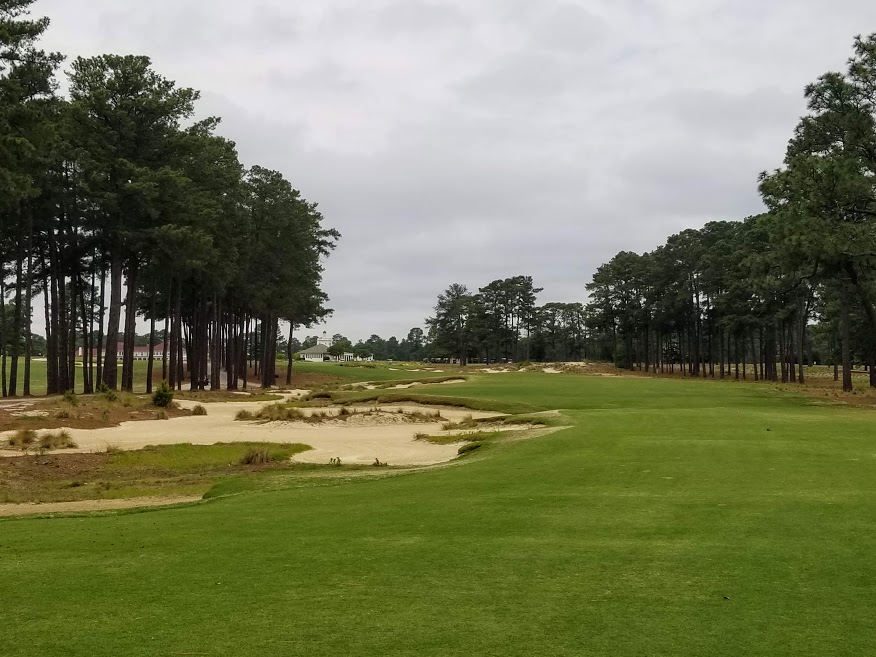

LN: Tell me more about No.4 and what was done there . . .
BF: Gil did such an incredible job. He took those landforms that had been moved in the previous three redesigns from Robert Trent Jones 1970’s /Rees Jones 1980’s /Tom Fazio 1999 and put them back to where they were in Donald Ross’ day and designed a new No.4 course. The elevation on No.4 is more dramatic than on No.2, from the 6th green you can see 15 holes of the golf course.
LN: No.2 has matured so well since Coore & Crenshaw unveiled it back in 2011, can you give us some insight into what has transpired since the restoration . . .
BF: We’ve been intentional on letting mother nature do that, but I wish I could say I was a genius that said – “hey this is what we’re gonna do, we’re going to allow it to happen”, but frankly it had a life of its own. Bill & Ben grew more confident the more they got into the work and we had the photography from 1943 that proved their intuitions correct. Once they took the irrigation away (from the edges of the fairway) it became a matter of letting the native areas be native. We’ve documented 75 native plants growing out there that were covered up previously by rough turf.


LN: What makes No.2 so special, other than the green complexes?
BF: The coolest thing about No.2 is you can play it once a month for a year and the course will be different each time you play it – literally. There’s nothing stagnant about it, the native area plants are constantly changing in size and quantity. We have to manage those areas discreetly. The turf, the greens, and the playing surfaces can host a U.S Open or major championship on any given day. One advantage for us is – we don’t have to grow rough or narrow up the fairway widths, just play it!
LN: I wondered as I wandered to my ball in the native area left of the fairway on the fourth hole (not the ideal playing position), are these areas being managed, and if so how, and how often, is there a certain random element to these areas?
BF: It’s a little of both, just after when you were here (May 23rd-26th) we finally got some rainfall, so a flush of growth quickly followed. Some of those are desirable, some aren’t. By late August, early Sept some of that vegetation will be too big and we’ll go out by hand and remove some. Next year they’ll return as seedlings.
LN: Do you think the “back to the future” restoration of No.2 will resonate throughout the golf community at large or just influence the N.C sand hills region? (This question came in from John Reilly Superintendent at Longboat Key Club on the gulf coast of Florida).
BF: I think it’s industry-wide, a sustainable model. The core golfers we see here now are not the same people we had here in the 90’s. People love Sand Hills, Sand Valley, Bandon and Cabot – that’s what they want now. One of the benefits of what we did was eliminate overseeding – something I’ve wanted to do for a long time.


LN: How has the move to ultra-dwarf bermuda turf greens changed things at Pinehurst?
BF: It allows us to present the condition levels that we all want – firm & fast for 52 weeks a year. Bentgrass only allowed us to do that 35 maybe 40 weeks a year, July and August were brutal with bentgrass. It was always in a state of flux from week to week or month to month. With the ultra-dwarf bermuda we haven’t had to cover the greens in the winter the last two years. It has completely changed our chances of success. I believe our U.S Open in 2024 will be the very first one played on bermuda greens.
LN: You stated earlier that you guys can host a U.S Open here with just a few minor tweaks, so with so few modifications needed before the next U.S Open here in 3 years – what will the focus be as far as preparation is concerned?
BF: It will be mostly pertaining to the native areas since they are always changing depending on rainfall. For example, prior to the 2014 U.S Open Mike Davis was out with me on the golf course – it was spring and he commented on how much he liked the way the native areas looked with all of the blooms and colors, he wanted it to be kept as is, I had to inform him that it won’t look this way in mid-June. The same thing happened for the Amateur in 2019, they were used to how the native plants looked in June, but in August when the Am is played, it’s a different animal. In 2024, that will be the focus, we don’t anticipate any architecture changes to the course.
LN: What’s next for Bob Farren beyond Pinehurst, somewhere or something you’re planning on?
BF: Honestly, I don’t think there’s anything I’d rather do then come to work here at Pinehurst. The people I’m working with, the future with the USGA here and their Green Section, we’ll become involved with them – so I’m excited about it all . . .


